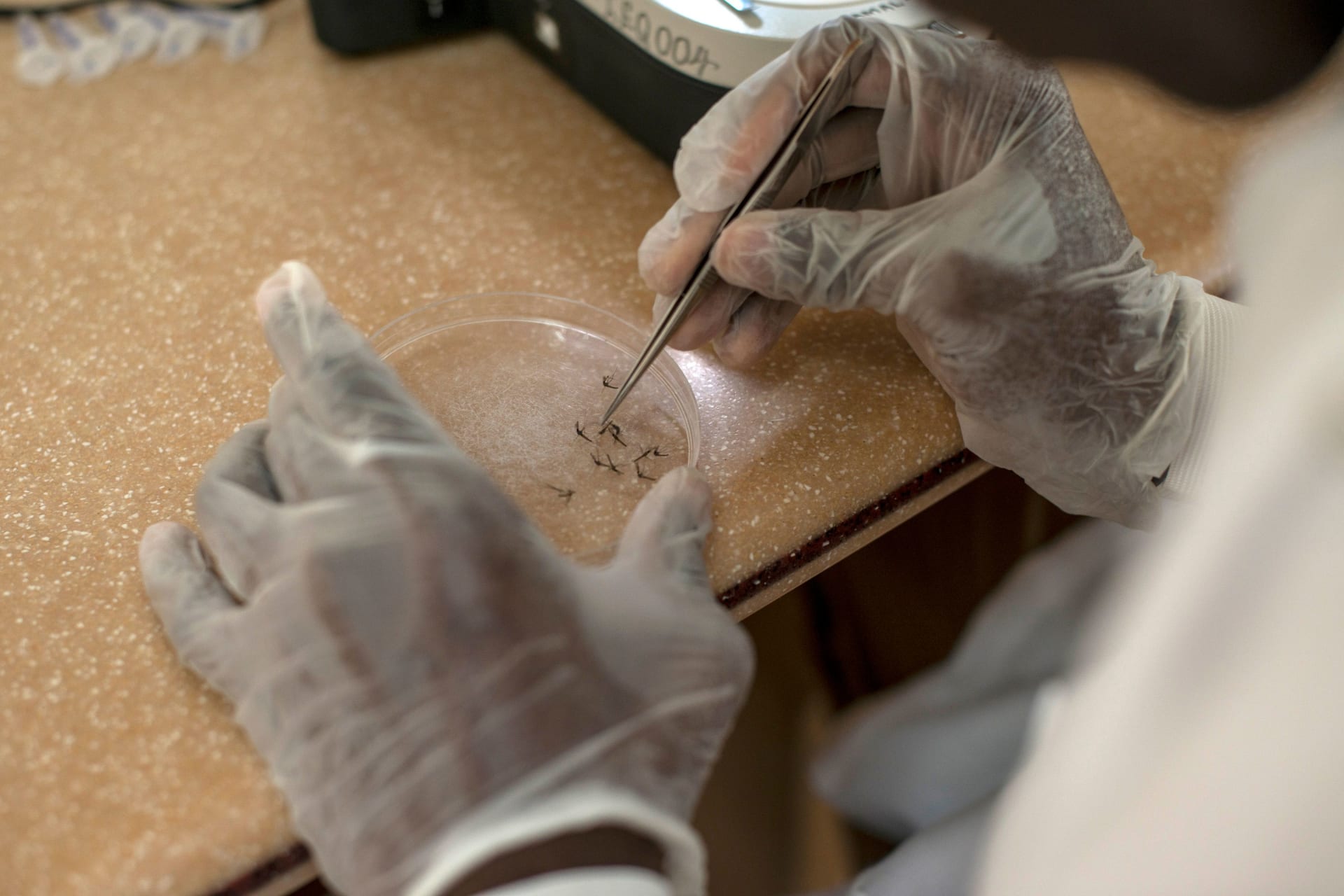دبي، الإمارات العربية المتحدة (CNN)-- التخلص من الأمراض المعدية يُعتبر إنجازاً علمياً وإنسانياً على مر العصور، لكن بعض الأمراض قد يصعب القضاء عليها.
الجدري، الذي كان السبب في قتل مليوني شخص في سنة واحدة فقط وشوه الكثيرين، هو المرض البشري الوحيد الذي قُضي عليه. ولقد كان إنجازاً حُقق في عام 1979، بعد جهود التطعيم المضنية والطويلة.
أما شلل الأطفال الذي يقترب العالم من القضاء عليه، فقد بدأت الحملة للقضاء عليه في عام 1998، وتجاوزت حوالي عقدين من الموعد النهائي المحدد لعام 2000.
كذلك الأمر بالنسبة لـ"دودة غينيا"، فإن الموعد النهائي للقضاء التام عليها، وهي حالة تؤدي إلى حدوث تقرحات، وتورم حتى تخرج الدودة، قد باءت بالفشل.
ويعاني الكثيرون في مجتمع الصحة العالمي من أمراض فتاكة أخرى: الملاريا، التي تقتل 400000 شخص سنوياً، غالبيتهم من الأطفال الذين تقل أعمارهم عن 5 سنوات.
ويدعو تقرير صادر عن 41 من أبرز علماء الملاريا في العالم وعلماء الطب الحيوي وعلماء الاقتصاد وصانعي السياسات الصحية، إلى عالم خالٍ من الملاريا بحلول العام 2050، ويوضح بالتفصيل حالة المرض وطريق القضاء عليه.
- عدو معقد
الملاريا، مرض طفيلي ينتقل عن طريق لدغة البعوضة، وهو مرض معقد العلاج أكثر من الجدري أو شلل الأطفال.
وعلى عكس شلل الأطفال والجدري، يبدو أن اللقاح لا يؤدي دوراً رئيسياً في القضاء عليه. وبينما يخضع لقاح الملاريا لتجربة كبيرة في 3 دول إفريقية، قال السير ريتشارد فيتشيم، الرئيس المشارك للجنة "Lancet" المعنية بالقضاء على الملاريا ومدير مجموعة الصحة العالمية بجامعة كاليفورنيا في سان فرانسيسكو، إن هيئة المحلفين لا تزال غير واثقة بشأن ما إذا كان ذلك سيكون مفيداً على نطاق واسع، وأن تقرير اللجنة "يتوقع القضاء على الملاريا بدون لقاح."
ويقول التقرير إن الاستئصال سيعتمد على أدوية جديدة، وتشخيصات، ومبيدات حشرية للتغلب على المشكلة المتزايدة المتمثلة في مقاومة عقاقير الملاريا.
واُقتُرحت بعض التقنيات الجديدة مثل تعديل الجينات ببعوض معدّل وراثياً، لكن فيتشيم يقول إن تطبيق يخضع للمخاوف التنظيمية والأخلاقية المتمثلة في إطلاق مخلوقات معدلة جينياً في البيئة.
- التغلب على "الشعور بالهزيمة"
حاول العالم القضاء على الملاريا بعد فترة وجيزة من تأسيس منظمة الصحة العالمية في عام 1948. واستمر البرنامج من العام 1955 حتى العام 1969 وقد تم القضاء على المرض في العديد من البلدان، ولكنه لم ينفذ في أفريقيا وجنوب الصحراء الكبرى، أي المنطقة الأكثر تضرراً.
تم إحراز تقدم هائل بين عامي 2000 و2015، حيث انخفض عدد الوفيات الناجمة عن الملاريا بنسبة 62٪، وفقاً لمنظمة الصحة العالمية، وتراجع عدد الحالات بنسبة 41٪.
ويشير توقف التقدم إلى أن الملاريا قد استعادت عافيتها، بحيث سجلت 219 مليون حالة في عام 2017، مقارنة بـ 217 مليون في عام 2016.
وأعلنت منظمة الصحة العالمية بأنها لا تزال ملتزمة بالقضاء على الملاريا، وخلصت إلى أن المرض لن يتم القضاء عليه بالأدوية والأدوات المتاحة حالياً، على الرغم من أن الاستئصال سينقذ ملايين الأرواح ويوفر عائداً على الاستثمار بمليارات الدولارات.
وأشار التقرير إلى أنه "حتى مع أكثر السيناريوهات والتوقعات تفاؤلاً، فإننا نواجه حقيقة لا مفر منها: باستخدام الأدوات الحالية، سيكون هناك 11 مليون حالة إصابة بالملاريا في أفريقيا في عام 2050."
- خطة طموحة؟
وقال فيتشيم إنه بالإضافة إلى الأدوية الجديدة والابتكارات التكنولوجية، هناك شيء واحد سيساعد في القضاء على الملاريا، وهو الإدارة الأفضل لبرامج الاستئصال.
ويخالف فيتشيم النقاد الذين يقولون إن الوقت ليس مناسباً للدفع باتجاه تاريخ محدد للاستئصال، وبدلاً من ذلك ينبغي برأيه على السلطات الصحية العودة إلى المسار الصحيح لتحقيق الأهداف الحالية مثل خفض حالات الملاريا والوفيات بنسبة 90٪ بحلول عام 2030، مؤكداً أن "الالتزام يحتاج إلى جدول زمني، وبدون ذلك لن يكون الالتزام جاداً."
